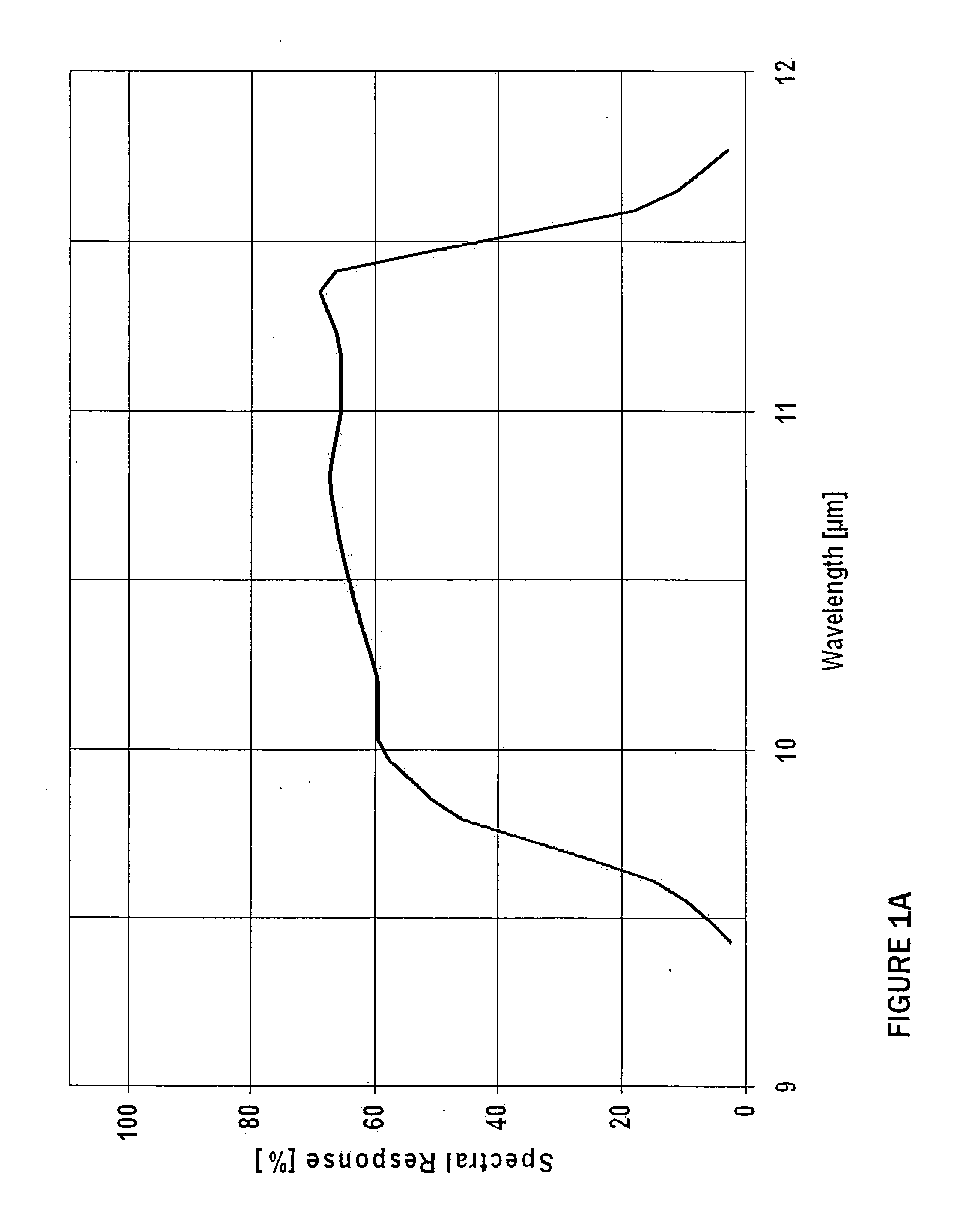[0007]This invention enables accuracy enhancement of noncontact
infrared thermometer data acquired from either
narrowband or
wideband infrared thermometers by correcting for intervening atmospheric effects. In the present invention, the
signal of an
infrared thermometer is corrected for the intervening atmospheric emission contribution by separating out the intervening emission from the
signal to thereby enhance accuracy of temperature measurements at a cloud margin or other remotely sensed target. Use of the methods of this invention with wideband infrared thermometers enables such enhanced accuracy at much lower hardware cost. For
remote sensing applications where the highest accuracy attainable with noncontact
infrared thermometry is desired, correction to narrowband infrared thermometers can also be obtained. Use of the methods and apparatus of this invention can be made in the fields of atmospheric
radiometry used in atmospheric science and
meteorology, look-down airborne measurements of the temperature of the
planetary surface, military optical applications such as infrared sensing devices, battlescene
visibility and attenuation, heat seeking apparatus, corrections of remotely sensed targets in other fields, and a variety of other applications.
[0010]The apparatus of this invention is provided for enhancing performance of a noncontact infrared
thermometer of interest deployed to take temperature measurements of a target across an intervening atmosphere at a measuring locale. The apparatus includes a tunable
microwave radiometer co-located with the infrared
thermometer for outputting
atmospheric temperature and water vapor profiles and a processor connected to receive the profiles and target temperature measurements from the infrared thermometer. The processor has the dry atmospheric constituency and
water vapor absorption coefficients specific to the noncontact infrared thermometer of interest stored thereat. The target temperature measurements, profiles and the absorption coefficients are utilized in
processing to correct output inaccuracy of the infrared thermometer due to
signal contribution from the intervening atmosphere and provide accuracy enhanced target
temperature measurement output from the processor.
[0012]It is another object of this invention to provide methods and apparatus whereby the signal of an infrared thermometer is corrected for intervening atmospheric emission contribution to enhance accuracy of noncontact temperature measurements at a cloud margin or other remotely sensed target.
[0014]It is still another object of this invention to provide a method for enhancing performance of a noncontact infrared thermometer type that includes the steps of determining dry atmospheric constituency absorption coefficient specific to the noncontact infrared thermometer type, determining
water vapor absorption coefficient specific to the noncontact infrared thermometer type, and, in an operational mode deploying the noncontact infrared thermometer type to obtain raw target temperature data across an intervening atmosphere, implementing the coefficients in
processing with site-based
atmospheric temperature and water vapor density profile and pressure measurements to provide corrected target temperature data compensating for
contamination in the
raw data due to the intervening atmosphere.
[0016]It is still another object of this invention to provide an apparatus for enhancing performance of a noncontact infrared thermometer of interest deployed to take temperature measurements of a target across an intervening atmosphere at a measuring locale that includes a tunable
microwave radiometer co-located with the infrared thermometer for outputting atmospheric temperature and water vapor profiles, and a processor connected to receive the profiles and target temperature measurements from the infrared thermometer and having dry atmospheric constituency and
water vapor absorption coefficients specific to the noncontact infrared thermometer of interest stored thereat, whereby the target temperature measurements, the profiles and the absorption coefficients are utilized in processing at the processor to correct output inaccuracy of the infrared thermometer due to signal contribution from the intervening atmosphere and provide accuracy enhanced target
temperature measurement output.
 Login to View More
Login to View More  Login to View More
Login to View More 


